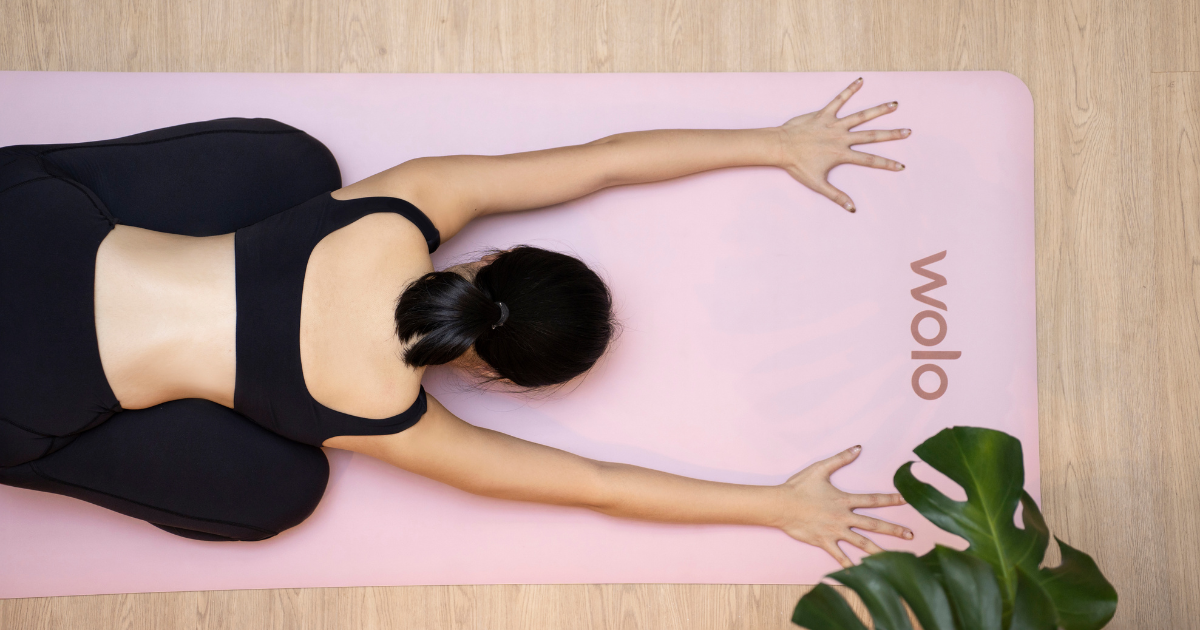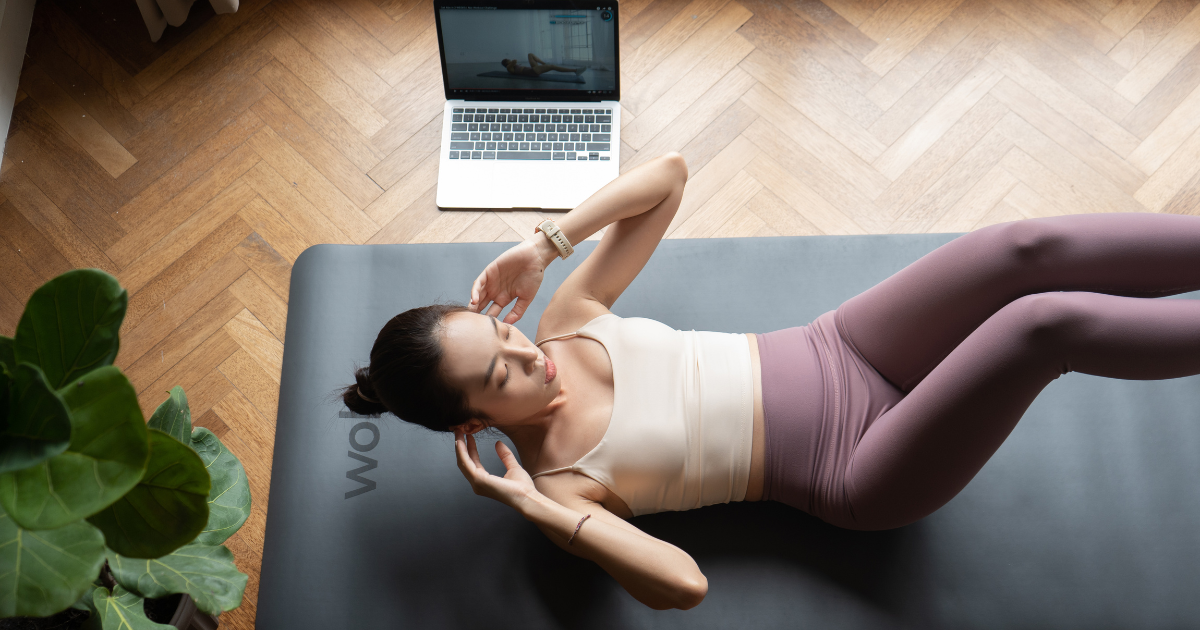If you’ve ever felt stiff, stressed, or just plain exhausted, Yin Yoga might be exactly what you need.
Unlike fast-paced yoga styles, Yin is slow, deep, and meditative—helping you stretch out tight muscles and release built-up tension. Each pose is held for several minutes, allowing your body to truly let go and sink into the stretch.
Whether you’re a beginner or an experienced yogi, incorporating Yin Yoga into your routine can improve flexibility, support joint health, and bring a sense of calm.
What Is Yin Yoga?

Yin Yoga is a slow, meditative practice that focuses on deep stretching and relaxation. Unlike active yoga styles that engage muscles, Yin targets the body's connective tissues—fascia, ligaments, and joints—by holding poses for extended periods (usually 2 to 5 minutes). This passive approach allows for a deeper release and greater flexibility over time.
The practice is rooted in ancient Chinese medicine and Taoist philosophy, working with the body's energy channels (meridians) to promote balance and overall well-being. Because Yin Yoga involves stillness and breath awareness, it also serves as a powerful tool for mindfulness and stress relief. If you spend a lot of time sitting, working out, or dealing with daily stress, adding Yin Yoga to your routine can help counteract tightness and tension.
Benefits of Yin Yoga
Yin Yoga offers a unique blend of physical and mental benefits that make it a valuable addition to any practice.
- Improves flexibility and mobility. Holding poses for long durations allows muscles and fascia to stretch deeply, increasing your range of motion and reducing stiffness over time.
- Relieves tension and stress. Yin Yoga activates the parasympathetic nervous system, promoting relaxation and lowering cortisol levels, making it great for reducing stress and anxiety.
- Supports joint and connective tissue health. Unlike active yoga styles, Yin places gentle stress on ligaments and joints, keeping them lubricated and resilient as you age.
- Enhances mindfulness and mental clarity. The slow, meditative nature of Yin Yoga encourages deep breathing and presence, helping to quiet the mind and improve focus.
- Balances energy and promotes overall well-being. By stimulating meridians in the body, Yin Yoga helps release blockages and restore balance, leaving you feeling refreshed and recharged.
12 Essential Yin Yoga Poses
Now let’s dive into 12 essential Yin Yoga poses to help you feel more open, relaxed, and refreshed.
1. Butterfly Pose (Baddha Konasana)

Sit with the soles of your feet together and let your knees drop open. Fold forward gently, keeping your spine long. This pose stretches the hips, groin, and lower back. Avoid forcing your knees down—let gravity do the work.
Best for: Hip and groin flexibility, lower back relief.
2. Dragon Pose (Low Lunge)

Step one foot forward into a deep lunge, keeping your back knee on the floor. Rest your hands on the ground or a block. This opens the hip flexors and quads. Keep your front knee aligned over your ankle.
Best for: Hip flexor and quad release, post-run recovery.
3. Frog Pose (Mandukasana)
Start in a wide-knee child’s pose, then slide your knees outward and lower your chest. This pose deeply stretches the inner thighs and hips. Avoid forcing the knees too wide—move slowly.
Best for: Deep hip and groin opening, relieving tension from sitting.
4. Caterpillar Pose (Seated Forward Fold)
Sit with your legs straight and fold forward, allowing your spine to round. This pose stretches the hamstrings and spine while calming the mind. Don’t force your hands to your feet—just relax.
Best for: Hamstring flexibility, spinal release.
5. Sphinx Pose
Lie on your stomach and prop yourself up on your forearms. Keep your shoulders relaxed as you gently open the chest. This mild backbend strengthens the lower back and counteracts slouching.
Best for: Gentle backbend, posture correction.
6. Twisted Roots (Supine Spinal Twist)
Lie on your back, hug one knee to your chest, and twist it across your body. This stretch relieves spinal tension and aids digestion. Keep both shoulders grounded.
Best for: Lower back pain relief, spinal mobility.
7. Melting Heart Pose (Anahatasana)
From hands and knees, walk your arms forward and lower your chest toward the floor. This opens the shoulders and stretches the upper back. Keep your hips stacked over your knees.
Best for: Shoulder opening, upper back tension relief.
8. Thread the Needle
From hands and knees, slide one arm under the other and rest your shoulder on the floor. This pose stretches the shoulders and upper back while promoting spinal rotation.
Best for: Shoulder and upper back release.
9. Sleeping Swan (Pigeon Pose Yin Variation)

Bring one leg forward into a pigeon pose and fold over your front leg. This deep hip opener also stretches the lower back. Use props if needed for support.
Best for: Hip and glute flexibility, lower back tension.
10. Reclining Twist
Lie on your back, bring your knees to one side, and let them rest. This passive spinal twist eases tension and helps digestion. Keep your shoulders down.
Best for: Spinal decompression, digestive health.
11. Happy Baby Pose
Lie on your back and grab the outsides of your feet, pulling your knees toward your armpits. This gently stretches the hips and lower back. Keep your tailbone grounded.
Best for: Lower back relief, hip flexibility.
12. Savasana (Corpse Pose)

Lie flat on your back with arms relaxed at your sides. Focus on deep breathing and full-body relaxation. This is the final resting pose to integrate all the benefits of your practice.
Best for: Total relaxation, stress relief.
How to Practice Yin Yoga Safely
Yin Yoga is meant to be gentle, but it’s important to approach it with care. Move into each pose slowly and never force a stretch—your body will open up over time. Using props like bolsters, blocks, or even a high-quality yoga mat can provide additional support and make your practice more comfortable.
In deep hip and back stretches, props help ease tension and prevent overstretching. The key is relaxation, not pushing through pain. If you feel sharp discomfort, ease out of the pose and adjust as needed. Also, focus on deep breathing to stay present and allow your body to fully release tension.
Practicing consistently, even for just a few minutes a few times a week, can bring lasting benefits. Whether you’re aiming to improve flexibility, relieve stress, or simply unwind, Yin Yoga is most effective when approached with patience and mindfulness.
FAQs About Yin Yoga Poses
Is Yin Yoga good for beginners?
Yes! Yin Yoga is beginner-friendly because it involves passive poses and long holds. Just start with gentle stretches and use props if needed.
How often should I do Yin Yoga?
You can practice Yin Yoga 2-3 times a week or daily if it feels good. It’s great for recovery and flexibility.
Can I do Yin Yoga before bed?
Absolutely! Yin Yoga helps relax the body and mind, making it an excellent pre-sleep routine.
What should I wear for Yin Yoga?
Wear loose, comfortable clothing that allows you to move and stretch easily. Since Yin Yoga involves long holds, layering up can help keep your body warm.
Can Yin Yoga help with anxiety?
Yes! Yin Yoga encourages deep breathing and relaxation, which can activate the parasympathetic nervous system, helping to reduce stress and anxiety over time.
Add These Yin Yoga Poses to Your Practice
Yin Yoga is a simple yet powerful way to release tension, improve flexibility, and bring more calm into your life.
Whether you're dealing with tight hips, back pain, or just need to slow down, these poses can make a difference. Try adding a few to your routine and notice how your body responds.





